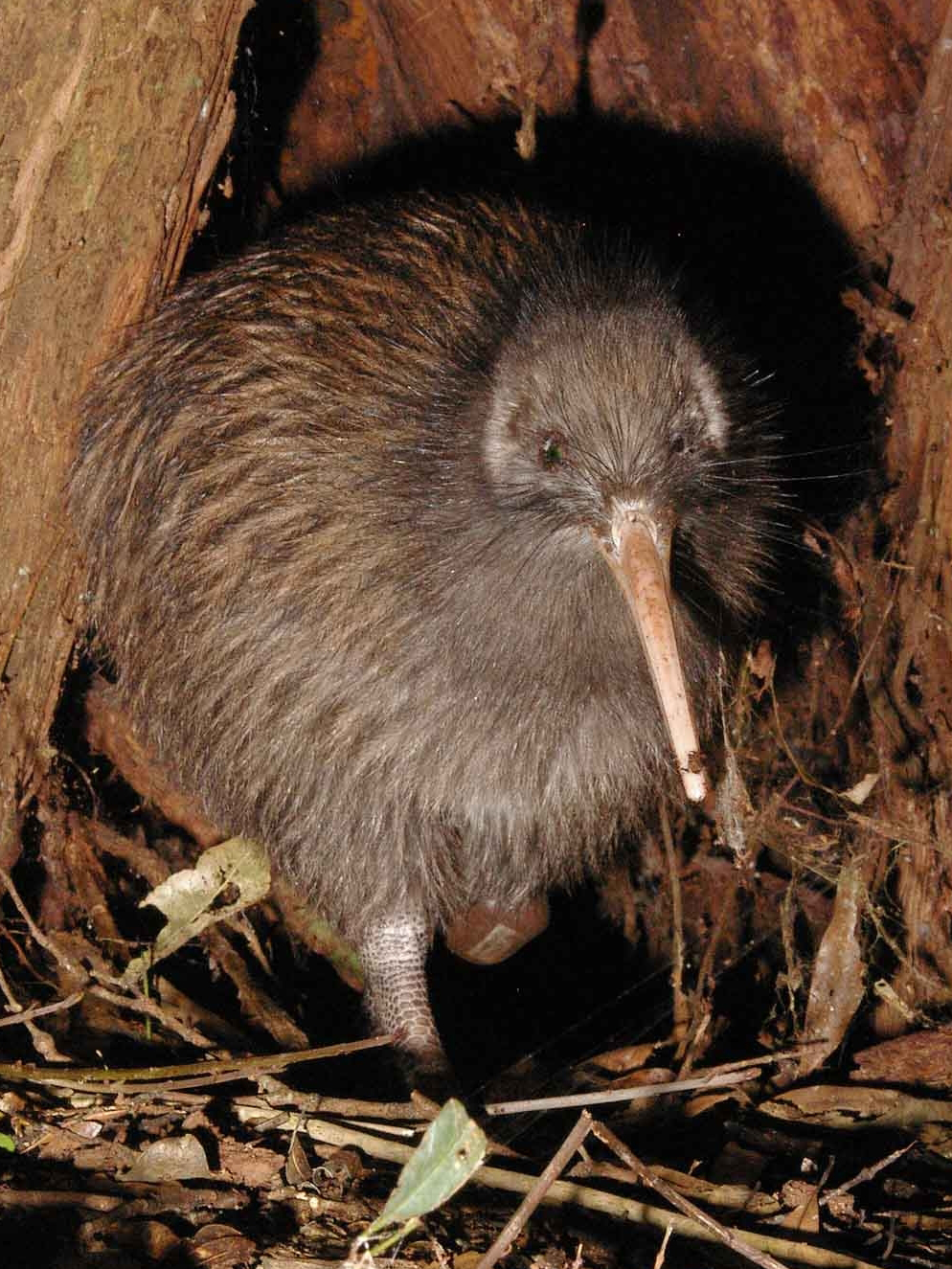The Kiwi bird is an extraordinary creature that holds great significance in New Zealand. With its distinct appearance and charming characteristics, this flightless bird has captured the hearts of many. In this article, we will delve into the captivating world of the kiwi bird, exploring its physical attributes, life cycle, endangered status, cultural importance, and more.

Source: Maungatautari Ecological Island Trust, Public domain, via Wikimedia Commons
The Kiwi Bird’s Appearance and Size
With its round body and small stature, the kiwi bird stands out among its avian counterparts. These adorable creatures measure approximately 16-20 inches in height and weigh around 2-7 pounds. They possess unique features, including a long, slender beak that helps them probe the soil for insects and worms, and short wings that are virtually useless for flying. Additionally, the kiwi bird is renowned for its dense, shaggy feathers, which range in color from brown to gray.
The Life of a Kiwi Bird
Habitat and Distribution
Kiwi birds are native to New Zealand and are found primarily in the country’s forests, scrublands, and grassy areas. They have adapted to various habitats, including mountains, lowlands, and coastal regions. Each species of kiwi bird has its preferred habitat and geographical distribution, with the North Island brown kiwi, Great spotted kiwi, and Little spotted kiwi being some of the most well-known.
Diet and Feeding Habits
Kiwi birds are omnivorous, with a diet that primarily consists of insects, worms, and invertebrates found in the soil. Their long beaks enable them to probe the ground, sniffing out their prey using their exceptional sense of smell. They have a slow feeding pace, meticulously searching for food in leaf litter and soil.
Reproduction and Life Cycle
The kiwi bird has a unique reproductive process. The female kiwi bird lays a large, disproportionately sized egg, which is approximately 20% of her body weight. The male kiwi bird takes on the responsibility of incubating the egg for about 70-85 days until it hatches. Once hatched, the kiwi chick faces numerous challenges, including predators and the need to quickly gain strength and independence.
The Kiwi Bird’s Endangered Status
Sadly, the kiwi bird faces the threat of extinction. Due to habitat loss, predation by invasive species, and human activities such as deforestation and hunting, their population has dwindled over the years. New Zealand has recognized the urgency of conserving this national treasure and has implemented various conservation programs and initiatives to protect the kiwi bird. These efforts include predator control, habitat restoration, captive breeding programs, and public education.
The Kiwi Bird and New Zealand’s Identity
The kiwi bird holds significant cultural and national importance in New Zealand. It has become a symbol of the country’s unique wildlife and is affectionately referred to as the “kiwi” by New Zealanders. Kiwi birds are frequently depicted in art, literature, and national emblems, representing the spirit of the nation and its commitment to conservation.
Kiwi Bird Fun Facts
- Despite their small size, kiwi birds are known for their strong sense of smell, which they use to locate food.
- Kiwi birds are the only bird species with nostrils at the end of their beaks.
- They are primarily nocturnal, using their excellent hearing and sense of touch to navigate in the dark.
- Kiwi birds have a lifespan of around 25-50 years, with some individuals living even longer.
- There are several species of kiwi birds, each with unique characteristics and habitats.
Conclusion
The kiwi bird is a remarkable and endearing species that captures the imagination of all who encounter it. From their distinct appearance to their fascinating life cycle, these flightless birds are a testament to the diversity of nature. However, their endangered status calls for immediate action to ensure their survival. By raising awareness, supporting conservation efforts, and valuing the kiwi bird as a symbol of New Zealand’s identity, we can contribute to their preservation for future generations to appreciate.
Frequently Asked Questions (FAQs)
- Are kiwi birds native to New Zealand?
- Yes, kiwi birds are native to New Zealand.
- Why are kiwi birds considered endangered?
- Kiwi birds are considered endangered due to habitat loss, predation by invasive species, and human activities such as deforestation and hunting.
- How big are kiwi bird eggs?
- Kiwi bird eggs are relatively large, representing approximately 20% of the mother’s body weight.
- Can kiwi birds fly?
- No, kiwi birds are flightless. They have short wings that are not suitable for flying.
- What is the significance of kiwi birds in New Zealand?
- Kiwi birds hold cultural and national importance in New Zealand. They are regarded as symbols of the country’s unique wildlife and are frequently featured in art, literature, and national emblems.
